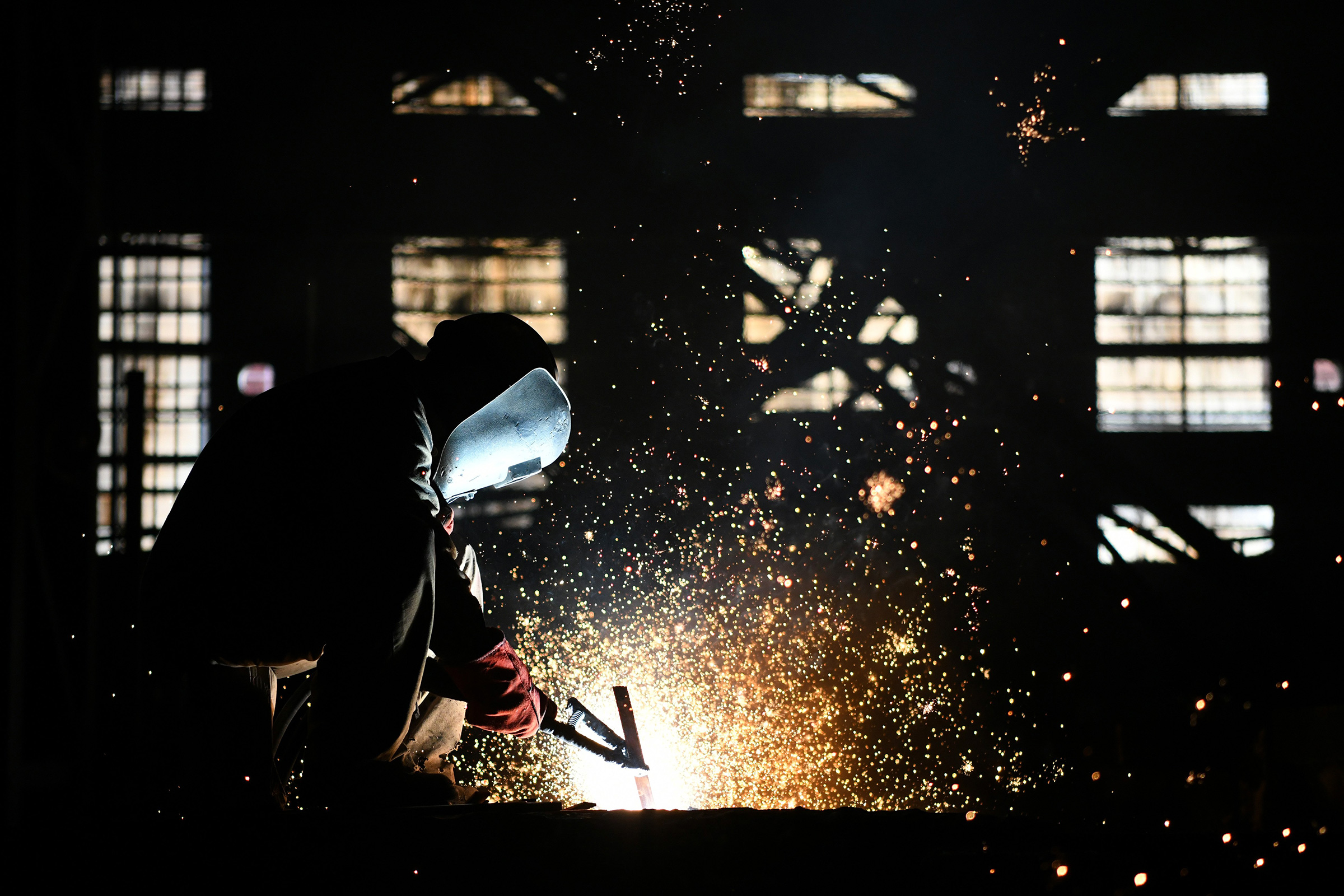
To manufacture flat-rolled steel, you need to start with a steel slab. For a company called NLMK USA, which makes carbon flat-rolled steel in Farrell, Pa., there’s nowhere to get those slabs domestically. That’s meant it has to source them from abroad and pay a 25% import tariff, even as prices have climbed as companies scramble to find new supplies. As its costs rise, NLMK USA is taking fewer orders and running fewer shifts. “It’s made it very difficult for us to compete,” says Bob Miller, president and CEO of NLMK USA.
The Trump tariffs that have already led to cutbacks across the U.S. were joined on Sept. 1 by a new round of 15% levies on more than $125 billion in imports, from wireless headphones to lawn mowers. This brings the average tax on Chinese imports up to 21.2% from just 3.1% when Donald Trump entered the White House, per the Peterson Institute for International Economics. American businesses like NLMK USA are being drafted into the trade war whether they like it or not. “[This hike] is going to have a bigger negative effect on the U.S. economy than any of Trump’s previous increases,” says James H. Nolt, a senior fellow at the World Policy Institute. “This is hitting the United States where it’s particularly vulnerable right now.”
In retaliation, Beijing on Sept. 1 began imposing additional tariffs on 1,717 U.S. exports, such as soybeans and car parts. While European exporters say they’re being offered incentives to set up in a newly expanded free trade zone in Shanghai, their American competitors are complaining of increased red tape. Beijing’s 5% levy on American crude oil marks the first time the fuel has been in the crosshairs since the world’s two biggest economies began their tussle over trade more than a year ago.
The Chinese economy is also feeling the pinch. Growth in its manufacturing sector slowed in August for the fourth month in a row, and Trump has also threatened to use emergency presidential powers to force American companies out of China. On Sept. 2, China’s Commerce Ministry complained to the World Trade Organization that the new tariffs “severely violated” a truce that Trump and Chinese President Xi Jinping agreed to at the G-20 summit in Osaka in June. “It’s costly for China and the whole global economy,” says Susan Shirk, chair of the 21st Century China Center at the University of California, San Diego, School of Global Policy and Strategy. “It’s really slowing down human progress in so many ways.”
Far from nearing an amiable conclusion, the trade war has now reached the stage where “each side [is] defending itself and figuring out how to impose costs on the other,” says Paul Haenle, a former White House adviser under the Obama and Bush Administrations and current chair of the Beijing-based Carnegie-Tsinghua Center. The question is how much both the U.S. and China can lose and still declare victory.
Trade’s function as a political cudgel has lately seen a renaissance, as evidenced by its use in situations like Japan and South Korea’s escalating dispute over reparations for historic abuses during Japanese colonial rule of the Korean Peninsula. But even as the tactic grows in popularity, its usefulness remains in question–especially given the increased risk of trade wars’ fueling diplomatic or even military confrontations.
Trump’s hard line with China is popular with his base, and even some Chinese business leaders quietly praise the U.S. President for pushing Beijing to enact what they consider to be much needed reforms to the state-oriented economy. But there is little sign China plans to enact the sweeping systemic changes to its policies on intellectual property, forced technology transfers, market access and industrial subsidies that would appease the Trump Administration. Beijing has consistently denied Washington’s accusations that it engages in unfair trade practices, and portrays the U.S. as the aggressor. In uncharacteristically spiky rhetoric, state news wire Xinhua accused the U.S. of “acting as a ‘school bully'” in a Sept. 1 op-ed.
It’s also unclear what exactly Trump hopes to achieve. He wants China to cut assistance for state-run companies, for example. But it’s unlikely that doing so would address the $419 billion U.S. trade deficit with China, which the President claims costs American jobs. Around 80% of China’s exports come from the purely private sector, and almost half from multinationals like Walmart that simply manufacture in China, according to Nolt.
Ironically, economists say the only way to really bring that figure down would be for the Chinese state to intervene to artificially stymie trade with the U.S. “What Trump really wants is way beyond China’s capacity to give,” says Nolt.
And so the trade war rumbles on. Further tariff increases are expected in October and December, encompassing almost everything China sells to the U.S., from golf shoes to iPhones. If they’re enacted, new research by University College London and the London School of Economics shows, Americans could lose something else this year: up to $970 per household.
–With reporting by ALANA SEMUELS/SAN FRANCISCO
Correction: Sept. 8
The original version of this story misstated where NLMK USA buys steel slabs. Its overseas supplier is in Russia, where tariffs have resulted in higher prices, not China.
More Must-Reads from TIME
- Why Biden Dropped Out
- Ukraine’s Plan to Survive Trump
- The Rise of a New Kind of Parenting Guru
- The Chaos and Commotion of the RNC in Photos
- Why We All Have a Stake in Twisters’ Success
- 8 Eating Habits That Actually Improve Your Sleep
- Welcome to the Noah Lyles Olympics
- Get Our Paris Olympics Newsletter in Your Inbox
Write to Charlie Campbell/Beijing at charlie.campbell@time.com